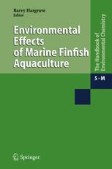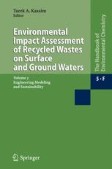Search
Search Results
-
The Sacca di Goro Lagoon and an Arm of the Po River
The Po di Volano canal–Sacca di Goro lagoon is a small hydrographic system partially located in the southern part of the Po River Delta. The total...
-
Development, Occurrence and Regulationof Antifouling Paint Biocides: Historical Review and Future Trends
Antifouling agents have been used on ships since the ancient Roman and Greek civilizations. A brief history is provided through to the demise of...
-
Worldwide Occurrence of Organotins from Antifouling Paints and Effects in the Aquatic Environment
Organotins belong to the most toxic pollutants for aquatic life known so far. Widespread contamination of harbors and areas with high ship**...
-
Role of Particle Sorption Properties in the Behavior and Speciation of Trace Metals in Macrotidal Estuaries: The Cadmium Example
The role of particles in the fate and speciation of trace metals in macrotidal estuaries was studied using a surface complexation model (MOCO)....
-
Antifouling Paint Booster Biocides: Occurrence and Partitioning in Water and Sediments
Following the ban on the use of tributyltin (TBT) in antifouling, several organic booster biocides have been used in conjunction with copper in...
-
New Trends in Sample Preparation Methods for the Determination of Organotin Compounds in Marine Matrices
Tributyltin still remains a major issue for the marine environment and its determination is mandatory by legislation in several countries. As for...
-
The Tail of Two Rivers in Tasmania: The Derwent and Huon Estuaries
The Derwent and Huon Rivers are two relatively small river systems in the southeast of Tasmania (Australia). They terminate in estuaries that are...
-
Present Status of Antifouling Systems in Japan: Tributyltin Substitutes in Japan
An international conference held by the International Maritime Organization in October 2001 adopted an “International convention on the control of...
-
Geochemistry of the Amazon Estuary
The Amazon River supplies more freshwater to the ocean than any other river in the world. This enormous volume of freshwater forces the estuarine...
-
Lithium-Normalized Zinc and Copper Concentrations in Sediments as Measures of Trace Metal Enrichment due to Salmon Aquaculture
The results of metal analyses carried out on surficial sediment samples collected in the coastal waters of southwest New Brunswick and the...
-
The Suitability of Electrode Measurements for Assessment of Benthic Organic Impact and Their use in a Management System for Marine Fish Farms
A management system for marine fish farms in Norway has recommended the use of simple electrode measurements of redox potentials (E...
-
Hazardous Organic Chemicals in Biosolids Recycled as Soil Amendments
The generation and disposal of biosolids produced at municipal wastewater treatment plants is a major environmental issue. Approximately 900 kg of...
-
Nonaqueous Phase Liquid Pool Dissolution in Subsurface Formations
The objective of this chapter is to present some recent developments on nonaqueous phase liquid (NAPL) pool dissolution in water saturated subsurface...
-
Equilibrium Partitioning and Mass Transfer of Organic Chemicals Leached from Recycled Hazardous Waste Materials
Potentially hazardous waste materials (HWMs) are increasingly being recycled and used as highway construction and repair materials (CRMs). While...
-
Assessing Nitrogen Carrying Capacity for Blue Hill Bay, Maine: A Management Case History
As net-pen aquaculture in coastal waters grows, regulatory agencies must consider the potential for localized eutrophication. To avoid excessive...
-
Ecosystem Indicators of Water Quality Part II. Oxygen Production and Oxygen Demand
Seasonal transitions from oxygen production to oxygen demand at coastal aquaculture sites in southwestern New Brunswick (SWNB) can be defined in...
-
Organic Chemicals in Groundwater: Modeling Fate and Transport
Hazardous organic chemical waste that has been placed in landfills or recycled for use as highway construction and repair materials has the potential...
-
Beneficial Reuses of Scrap Tires in Hydraulic Engineering
Scrap tires are a high-profile waste material. There are serious concerns over the ever-mounting scrap tire problem. A need exists for increasing...
-
Mathematical Methods for Hydrologic Inversion: The Case of Pollution Source Identification
The reliable assessment of hazards or risks arising from groundwater contamination problems and the design of efficient and effective techniques to...
-
Benthic Macrofaunal Changes Resulting from Finfish Mariculture
We present a review of the benthic macrofaunal changes that are circumstantially linked to intensive marine finfish aquaculture, or mariculture....
